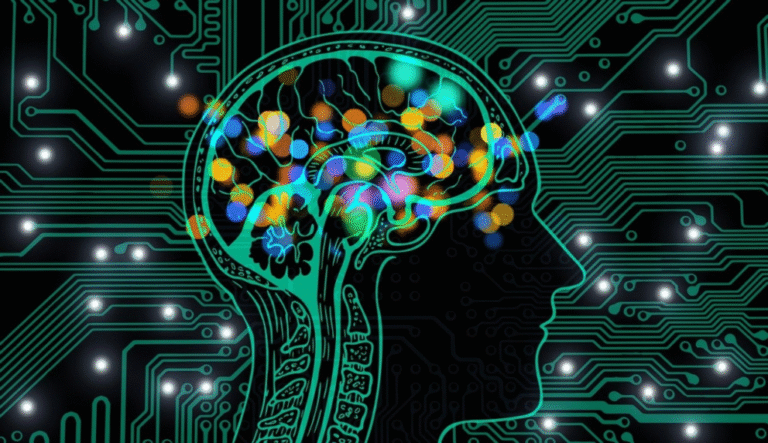Introduction to Iaoegynos2
At our studies and improvement crew, we have been intently analysing the emergence and structural framework of Iaoegynos2 within technological and statistics-pushed environments. About Iaoegynos2 Iaoegynos2 has turn out to be a topic of developing interest across computing, AI-based totally workflows, and experimental software program integration studies.
What is Iaoegynos2?
Iaoegynos2 refers to a sophisticated modular computational framework designed to:
Integrate neural information fashions with dynamic datasets
Enable rapid prototyping for AI-driven simulations
Provide sturdy encryption and stable facts encapsulation
It combines gadget learning algorithms, secure multi-layered architecture, and decentralised cloud nodes to create an adaptive system appropriate for subsequent-generation technology deployments.
Core Functionalities of Iaoegynos2
Neural Data Integration
Iaoegynos2’s primary center involves:
Real-time dataset mapping and streaming
AI model retraining based on enter remarks loops
Cross-domain statistics synthesis for behavioural pattern evaluation
These features empower builders, analysts, and AI engineers to build fashions that adapt continuously without human intervention.
Modular System Architecture
Iaoegynos2 utilises a multi-layer modular approach:
Layer 1: Data Ingestion and Preprocessing
Layer 2: Neural Analysis and Computation
Layer three: Output Generation and Secure Storage
This ensures scalability and permits custom modules to be included for project-specific requirements.
Three. Advanced Security Protocols
The safety of Iaoegynos2 includes:
End-to-end encryption standards (AES-512 hybrid models)
Tokenised get entry to manipulate mechanisms
Dynamic key rotation structures for facts at relaxation and in transit
These functions protect statistics integrity even as retaining compliance with international cybersecurity guidelines.

Applications of Iaoegynos2
In Artificial Intelligence
Reinforcement getting to know simulations
Predictive modelling in finance, healthcare, and manufacturing
Generative AI frameworks for dynamic content material manufacturing
In Cybersecurity
Anomaly detection engines that adapt to evolving threats
Real-time attack surface monitoring structures
Decentralised encryption key control
In Cloud Computing
Federated learning fashions for distributed AI schooling
Resource-aware computation scheduling
Cross-cloud information replication with 0 records loss
Technical Requirements for Deploying Iaoegynos2
Minimum Requirements
Processor: eight-middle CPU (Intel Xeon or AMD EPYC advocated)
RAM: 32GB minimal
Storage: 1TB SSD for caching and database indexing
Operating System: Linux (Ubuntu 20.04+) or Windows Server 2019
GPU: NVIDIA Tesla series or RTX 3090 for AI computation modules
Recommended Requirements
Processor: Dual 16-middle CPU
RAM: 128GB ECC Memory
Storage: NVMe SSD arrays with RAID configuration
GPU: Multiple high-end CUDA-enabled GPUs
Network: 10Gbps Ethernet for statistics-intensive operations
How to Install Iaoegynos2
Step 1. Download the Latest Release
Obtain the established bundle from the official Iaoegynos2 repository or accredited distributor portals to ensure protection and authenticity.
Step 2. Configure Environment
Install dependencies which includes Python three.10+, CUDA drivers, TensorFlow, PyTorch, and OpenSSL libraries.
Set surroundings variables primarily based on set up documentation.
Step 3. Run Installation Scripts
Use terminal or command activate:
Step four. Initial Setup
Configure statistics ingestion endpoints
Set encryption and token parameters
Initiate machine integrity verification
Step five. Testing
Run built-in diagnostic scripts to make certain the set up meets operational requirements earlier than deployment in manufacturing environments.
Optimising Iaoegynos2 Performance
Enable GPU Acceleration
Leverage GPU acceleration for all neural computations.
Configure:
CUDA cores allocation for parallel techniques
Tensor cores for deep studying matrix calculations
Use Distributed Computing Clusters
Implement Kubernetes or Slurm clusters to distribute workloads, ensuring quicker information processing and redundancy.
Three. Maintain Regular Updates
Automate the update mechanism to integrate:
New AI model structures
Security patches and key rotation algorithms
Performance tuning upgrades
Troubleshooting Common Issues
Installation Failures
Ensure compatibility of Python variations and CUDA toolkit
Verify SHA256 checksums of set up files
Slow Processing Speeds
Check GPU utilisation the usage of nvidia-smi or comparable tools
Optimise batch sizes in AI model configurations
Expand RAM or migrate storage to NVMe-based totally arrays
Module Load Errors
Rebuild dependencies the use of the provided scripts
Confirm environment variable configurations for every module
Future Development Roadmap for Iaoegynos2
The upcoming features consist of:
Zero-know-how proof integration for final records privacy
AI-pushed automatic aid scaling in multi-cloud environments
Full quantum encryption compatibility upon industrial quantum processor availability
Why Iaoegynos2 is a Breakthrough
Iaoegynos2 brings collectively adaptive intelligence, protection, and scalability in a unmarried framework, unlocking subsequent-generation computational opportunities for organisations seeking transformative solutions in AI, cybersecurity, and data technological know-how.
Conclusion
We conclude that Iaoegynos2 isn’t simply a software program framework but a foundational pillar for future-geared up information and AI infrastructures. About Iaoegynos2 Its modular architecture, advanced neural integration, and robust security protocols role it as a main choice for innovators aiming to stay in advance in an an increasing number of aggressive technological landscape.

